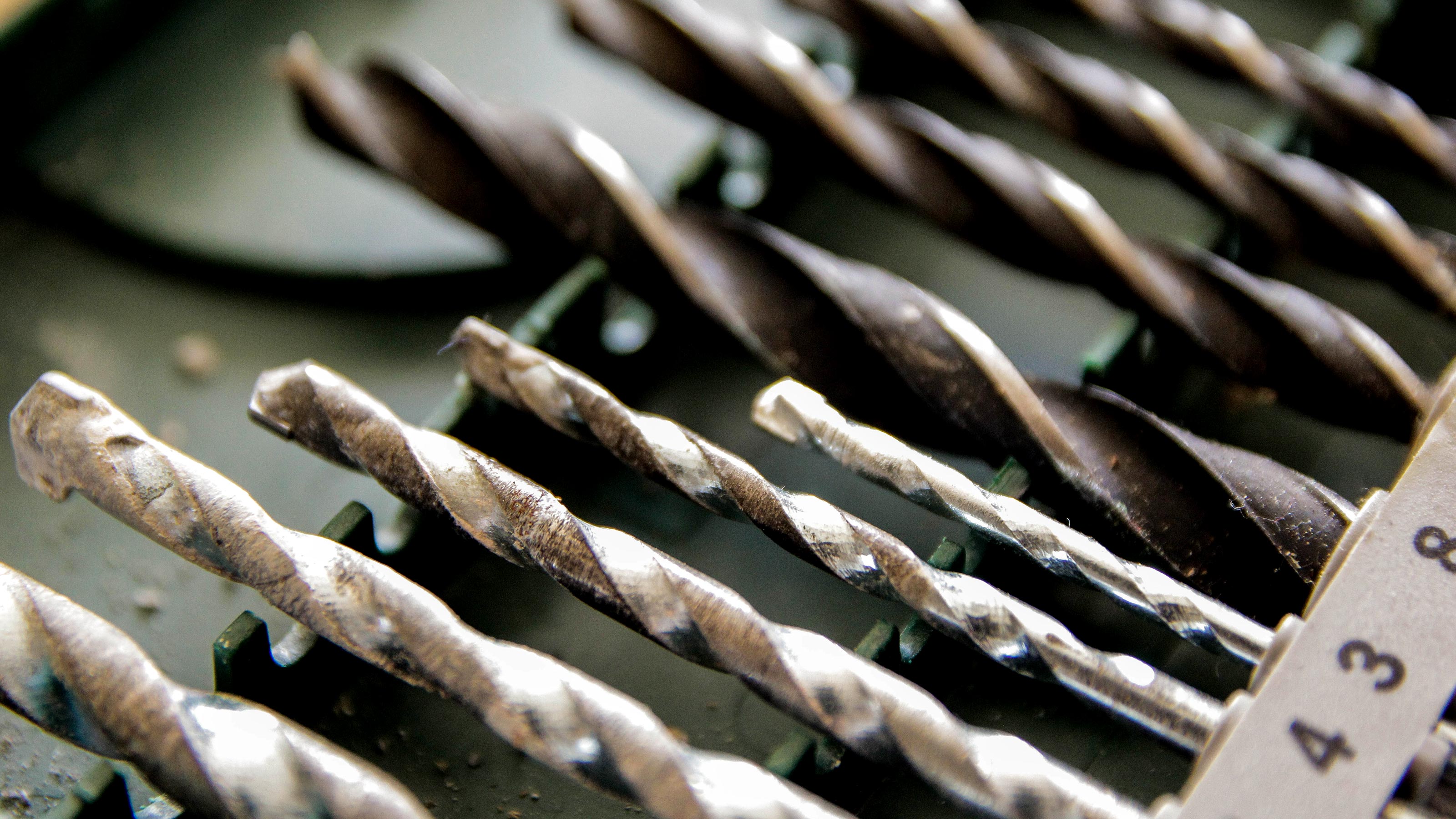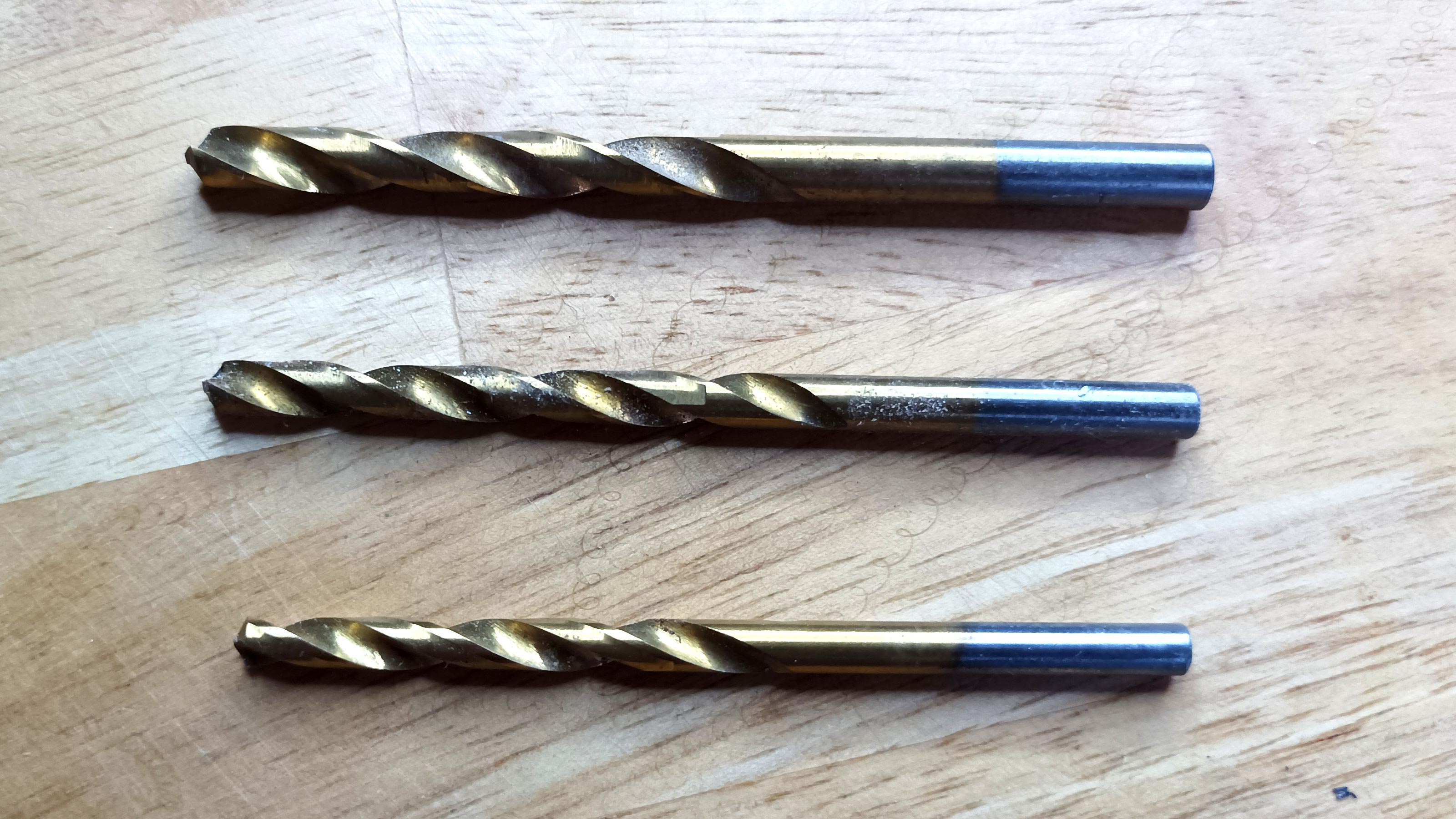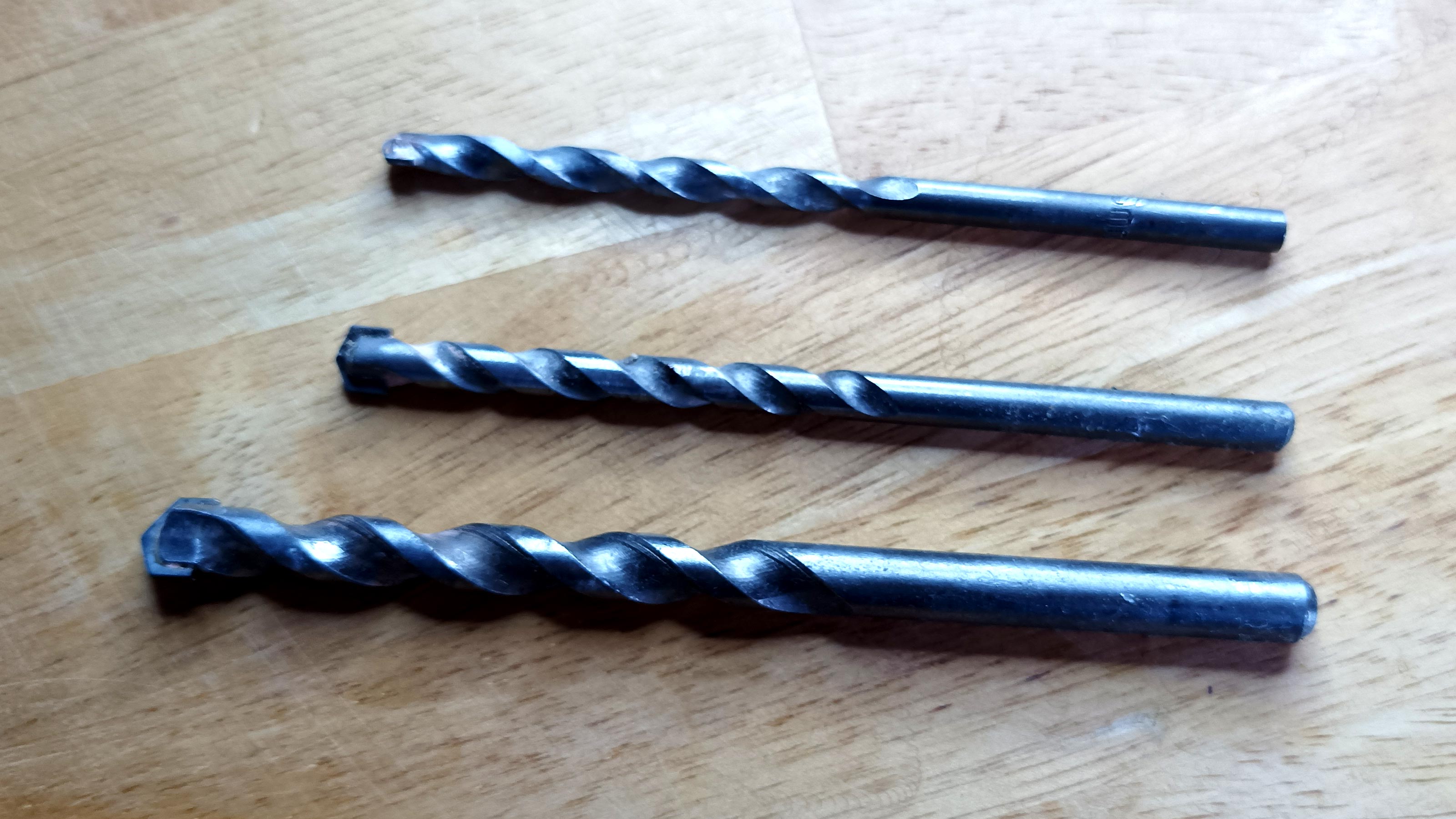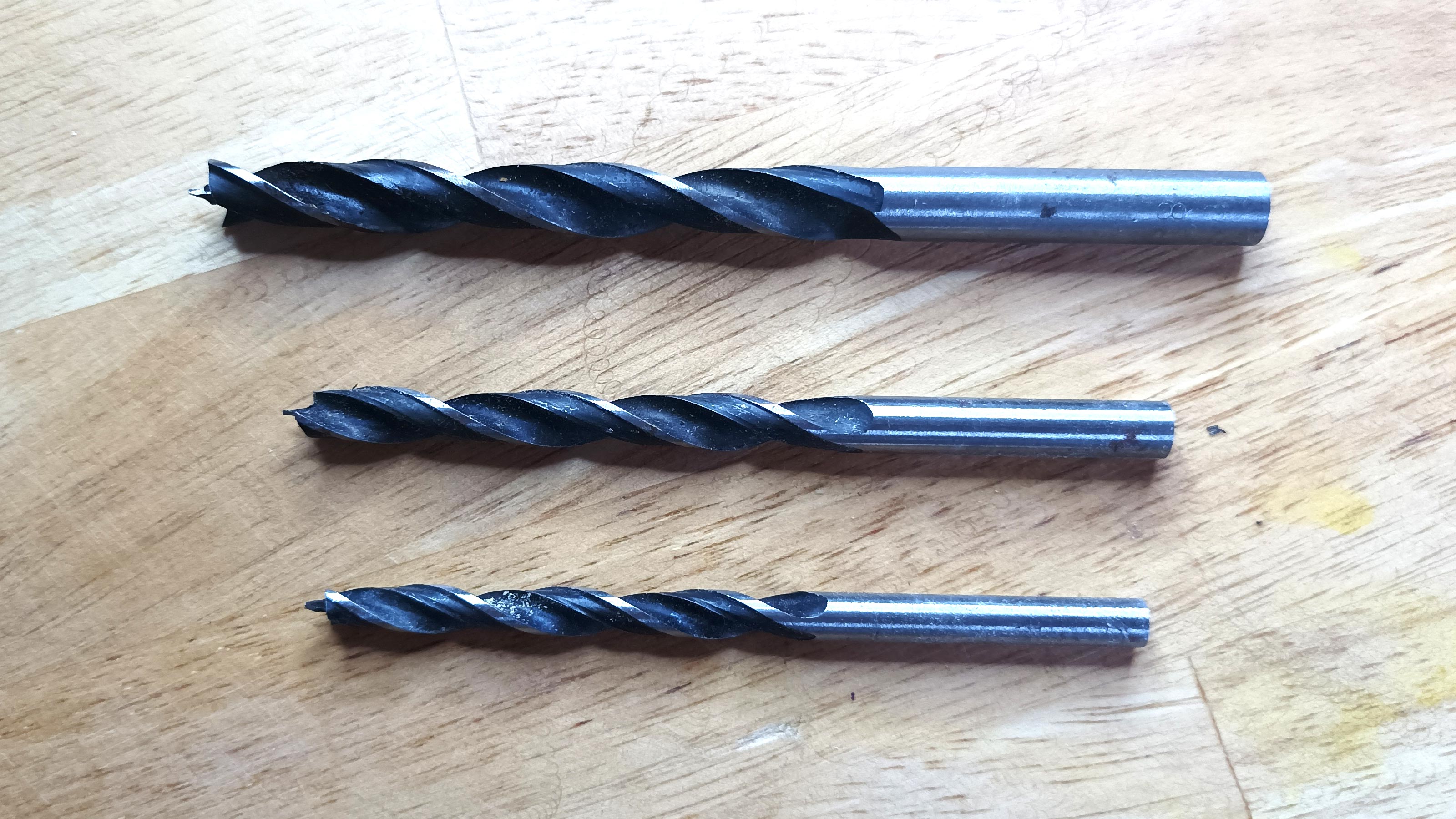8 Types of drill bit that every DIYer needs in their toolkit
What are the different types of drill bit? What do they do? Which one should I use for which job? Here we explain all

What types of drill bit do I need for my next DIY project? It sounds like a simple question, but it isn’t. There are a whole host of drill bits for different jobs and you need to be using the right one for the job or you'll damage your tool.
If you are looking to drill into wood, masonry, metal, ceramic or plastic you need the best cordless drill and the right drill bit. Choose a wood drill bit to drill into brick and it simply won't work. Choose the wrong wood drill bit for a woodworking project and it won’t do what you want.
Here we explain what each drill bit is good for and why you need it in your toolkit.
What types of drill bits are there?
We are here to help you choose the right type of drill bit for your next DIY project. Here's what they all do:
1. Twist drill bit
When the word drill bit is mentioned this is the type that springs to mind for most DIYers. It is an all-rounder and has sharp twin cutting edges that twist around the core to create grooves that act as channels to remove the debris being drilled out.
If your drill comes with a set of drill bits, it will invariably include a twist bit in various sizes. If it doesn’t come with any drill bits or you are looking for new bits, think about investing in a multi purpose set like this DeWalt 100 piece kit. It comes with twist bits, masonry bits and pretty much any type of bit you’ll need for most DIY projects. .
TYPICALLY USED FOR: General DIY jobs such as drilling holes in woods and plastic

2. Masonry drill bit
These look very similar to standard twist bits with grooves to remove debris but they take on much tougher tasks. Built specifically to tackle masonry such as brickwork, cement, concrete and similar dense materials.
Bring your dream home to life with expert advice, how to guides and design inspiration. Sign up for our newsletter and get two free tickets to a Homebuilding & Renovating Show near you.
To help make this happen they are carbide-tipped, which is slightly larger than the shaft of the drill bit. For home DIY projects you should only need a small set of masonry drill bits like this Ryobi masonry drill set.
However, if you don’t do a lot of DIY that includes drilling into masonry you can buy individual bits.
TYPICALLY USED FOR: Drilling holes into brickwork to put up shelves, coat racks and kitchen cabinets

3. Brad point bit
The Brad point drill bit looks very similar to a standard twist drill, but has a point in the middle that acts as a guide when drilling. It is specially designed to drill clean sharp holes in softwood and stay in position when being used.
Get yourself a set like this Bosch Professional 7 piece set. Ideal if you are building furniture, cabinets or shelving to make sure you get accurate and clean holes.
TYPICALLY USED FOR: General woodworking, cabinet making ,and furniture building and repair

4. Auger drill bit
The Auger drill bit is like the Brad point drill bit on steroids. It has the guide point on the top of the drill, and the twist design to get rid of debris, but comes in larger sizes. It would be used for larger scale woodworking projects rather than typical DIY projects.
This HPMAISON 6 piece Auger bit set has all the standard drill bit sizes from 6mm-16mm which are ideal for most DIY projects. If you need a larger bore you can buy bits individually.
TYPICALLY USED FOR: Large scale general woodworking
5. Hole saw
These drill bits combine a standard twist bit with a larger hollow metal saw sheath. The drill bit drills into the surface to create a stabilising point and the outer sheath — which has small sharp teeth — to cut a hole.
Best used at a low drill speed, hole saws can cut holes up to around 70mm in width and around 18mm in depth. If you don't own a hole saw get your hands on a set like this HYCHIKA 17 piece set, which has everything you need to get started and sizes from 19mm to 68mm.
TYPICALLY USED FOR: Cutting larger holes in worktops and kitchen cabinets where pipework needs to pass through
6. Spade drill bit
The spade drill bit has a single flat blade with a large point in the top to act as a guide. The point provides the starting point and the blade does the coarse cutting. Ideal for cutting holes in wood up to around 25mm rapidly where the finish doesn’t need to be aesthetically pleasing. This Bosch Professional 6 piece Spade bit set has sizes from 13mm to 25mm and is a good starter set.
TYPICALLY USED FOR: Cutting medium to large holes in wood quickly in areas where the hole won’t be seen, e.g under floorboards where wiring needs to go
7. Screwdriver bit
While technically not a drill bit, screwdriver bits are used with a drill. A specialist bit will fit into the drill chuck, while the other end will fit a screwdriver bit. Screwdriver bits come in a variety of sizes and types including slotted, Phillips, Hex, Pozi, Torz and Allen.
For most DIY jobs you will typically only need slotted and Phillips. Invest in an all-round set of screwdriver bits like this Draper 33 Piece set which has all the common types you need.
TYPICALLY USED FOR: For quickly screwing in different type of screws on most DIY jobs

8. Forsetner drill bit
This is more of a specialist drill bit, but it is still a really useful bit to have in your toolkit. The forsetner drill bit is a flat and round bit with a couple of blades that cuts medium to large holes that have a flat bottom, which makes them great for creating holes for dowels, studs and hinges .
TYPICALLY USED FOR: General woodworking and cabinet and furniture making
Steve Jenkins is a freelance content creator with over two decades of experience working in digital and print and was previously the DIY content editor for Homebuilding & Renovating.
He is a keen DIYer with over 20 years of experience in transforming and renovating the many homes he has lived in. He specialises in painting and decorating, but has a wide range of skills gleaned from working in the building trade for around 10 years and spending time at night school learning how to plaster and plumb.
He has fitted kitchens, tiled bathrooms and kitchens, laid many floors, built partition walls, plastered walls, plumbed in bathrooms, worked on loft conversions and much more. And when he's not sure how to tackle a DIY project he has a wide network of friends – including plumbers, gas engineers, tilers, carpenters, painters and decorators, electricians and builders – in the trade to call upon.

